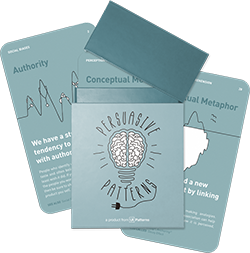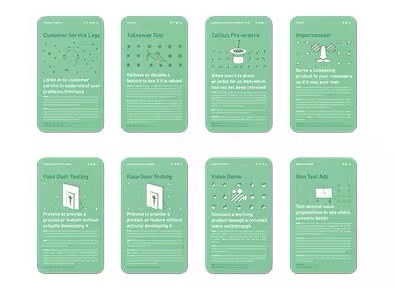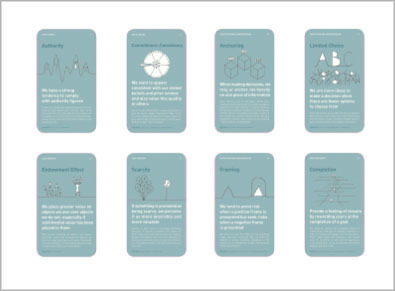Self-Monitoring
Design Pattern
Problem summary
Enable users to track the behavior they want to change
Usage
- Use to make it easy for users to adjust their behavior toward achieving a goal or outcome
This card is part of the Persuasive Patterns printed card deck
The Persuasive Patterns Card Deck is a collection of 60 design patterns driven by psychology, presented in a manner easily referenced and used as a brainstorming tool.
Get your deck!Solution
- Make it easy to measure. Eliminate the boring part of measuring and tracking performance or status to make it easier for users to know how well they are performing.
- Make correction easy. Help users adjust their behavior in real time. Heart rate monitors vibrates when your heart beats too fast or too slow to let the user know whether to decrease or increase the level of exertion.
- Infer consequences. Derive inferences about the broader context by combining several source of self-monitoring data and environmental data. An increased heart rate, little sleep, and no sweat might be a sign of mental stress.
Rationale
Make it easy for users to track performance or status to help them achieve predetermined goals or outcomes. Letting users understand how well they are performing, willl increase the likelihood of continuing to produce the behavior. Self-monitoring can help users learn about themselves and can be intrinsically motivating, but will almost always fail to get people to do things they do not want to do.
Discussion
- Measurement paradox. We tend to enjoy experiences less when tracking them. While measuring our performance may increase it, it also comes with the risk of decreasing how much we enjoy measured activities and how much we want to keep on doing them.
Self-monitoring is a concept introduced in the 1970s by social psychologist, Mark Snyder, that refers to our ability to regulate behavior to accommodate social situations. In 2002, Stanford professor, BJ Fogg, included Self-Monitoring as a persuasion strategy in his seminal book on Persuasive Technology.
1 Snyder, M. (1974). Self-monitoring of expressive behavior. Journal of Personality and Social Psychology, 30(4), 526–537.
2 B. J. Fogg (2002). Persuasive technology: using computers to change what we think and do. Ubiquity, Volume 2002, Issue December
3 Self Monitoring at Wikipedia.org
4 Self-Determination Theory by Anders Toxboe at Learning Loop
User Interface Design Patterns
- Forms
- Explaining the process
- Community driven
- Tabs
- Jumping in hierarchy
- Menus
- Content
- Gestures
- Tables
- Formatting data
- Images
- Search
- Reputation
- Social interactions
- Shopping
- Increasing frequency
- Guidance
- Registration
Persuasive Design Patterns
- Loss Aversion
- Other cognitive biases
- Scarcity
- Gameplay design
- Fundamentals of rewards
- Gameplay rewards


